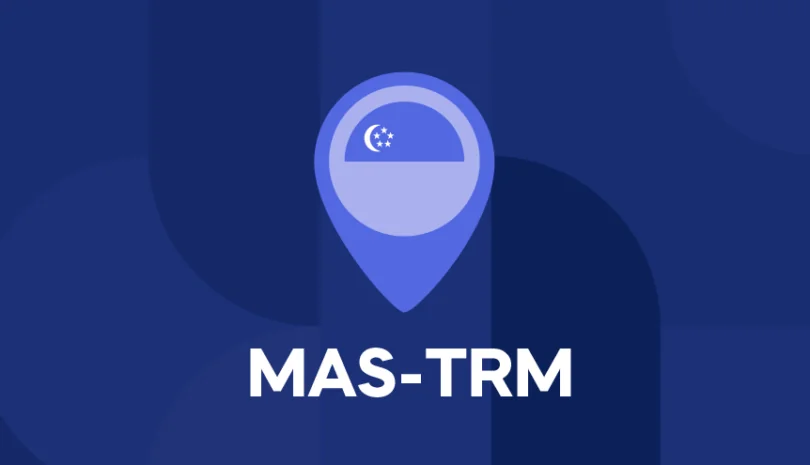Cybersecurity is a top priority for U.S. federal agencies, especially as threats to sensitive government data continue to evolve. Two key frameworks, FISMA (Federal Information Security Management Act) and FedRAMP (Federal Risk and Authorization Management Program), set the standards for how agencies and their vendors secure information systems. While both aim to strengthen federal cybersecurity, they apply in different ways and to different stakeholders.
For federal agencies and the contractors that support them, understanding the relationship between FISMA and FedRAMP is critical. Agencies must comply with FISMA to protect their information systems, while cloud service providers must meet FedRAMP requirements before their services can be used by the government. Recognizing the differences helps agencies make smarter procurement decisions and enables vendors to ensure their solutions meet federal security standards, an essential step in both compliance and third-party risk management.
What is FISMA?
The Federal Information Security Management Act (FISMA) was passed in 2002 and later updated under the Federal Information Security Modernization Act of 2014. Its purpose is to establish a comprehensive framework for securing federal information systems against cybersecurity threats. FISMA requires federal agencies and contractors working with them to implement strong security programs that safeguard sensitive data and reduce cyber risk.
At the core of FISMA is a risk-based approach developed by the National Institute of Standards and Technology (NIST). Agencies must categorize their systems based on the potential impact of a security breach, then apply appropriate security controls from NIST’s Special Publications, particularly NIST SP 800-53. Regular risk assessments, continuous monitoring, and annual reporting to the Office of Management and Budget (OMB) are also mandatory.
By aligning with FISMA, agencies ensure consistent security practices across the federal government, while vendors demonstrate that they can protect the government data they handle. This makes FISMA a foundational requirement for working within the federal ecosystem.
What is FedRAMP?
The Federal Risk and Authorization Management Program (FedRAMP) was established in 2011 to standardize the security assessment and authorization process for cloud services used by federal agencies. As agencies increasingly adopt cloud technologies, FedRAMP ensures that cloud service providers (CSPs) meet consistent, government-wide security requirements before their solutions can be deployed.
The FedRAMP authorization process is rigorous. CSPs must implement security controls aligned with NIST standards, undergo independent assessments by accredited third-party assessment organizations (3PAOs), and demonstrate compliance through continuous monitoring. Only after this process can a CSP receive an Authorization to Operate (ATO) and provide services to federal customers.
There are two main pathways for CSPs:
- Joint Authorization Board (JAB): The JAB, composed of representatives from the Department of Defense (DoD), Department of Homeland Security (DHS), and General Services Administration (GSA), reviews high-impact cloud services.
- Agency Sponsorship: Individual agencies can sponsor a CSP through the authorization process, typically for systems with lower to moderate impact levels.
FedRAMP not only provides security assurance but also accelerates cloud adoption across the government by reducing duplicative security reviews.
Key Differences Between FISMA and FedRAMP
While both FISMA and FedRAMP strengthen federal cybersecurity, they serve different purposes and apply to different groups. Here’s how they compare:
- Scope:
- FISMA applies to all federal information systems and the contractors who support them.
- FedRAMP applies specifically to cloud service providers offering solutions to the federal government.
- Focus:
- FISMA focuses on overall federal information security programs.
- FedRAMP standardizes cloud security authorization and monitoring.
- Oversight:
- FISMA is overseen by the Office of Management and Budget (OMB) with implementation guidance from NIST.
- FedRAMP is managed by the FedRAMP Program Management Office (PMO) and the JAB.
- Framework Basis:
- FISMA relies on NIST standards like SP 800-53.
- FedRAMP also uses NIST controls but applies them in a cloud-specific context.
- Certification:
- FISMA compliance is demonstrated through annual reports and audits.
- FedRAMP requires an Authorization to Operate (ATO) after assessment by a 3PAO.
- Implementation:
- FISMA mandates continuous monitoring across all federal systems.
- FedRAMP mandates continuous monitoring for CSPs to maintain their authorization.
How FISMA and FedRAMP Intersect with Third-Party Risk Management
Under FISMA, federal agencies are required to assess and manage the risks posed by all third parties that handle federal data. This includes contractors, service providers, and vendors, regardless of whether they provide cloud-based or traditional IT services. Agencies must ensure these third parties implement adequate security controls aligned with NIST standards and continuously monitor their systems. By making third-party risk management (TPRM) a core requirement, FISMA ensures that sensitive government information remains protected across the entire supply chain, not just within agency systems.
FISMA’s Role in TPRM:
Under FISMA, federal agencies are required to assess and manage the risks posed by all third parties that handle federal data. This includes contractors, service providers, and vendors, regardless of whether they provide cloud-based or traditional IT services. Agencies must ensure these third parties implement adequate security controls aligned with NIST standards and continuously monitor their systems. By making third-party risk management (TPRM) a core requirement, FISMA ensures that sensitive government information remains protected across the entire supply chain, not just within agency systems.
FedRAMP’s Role in TPRM
FedRAMP narrows the focus of third-party risk management to cloud service providers. It provides a standardized, government-wide framework for assessing, authorizing, and continuously monitoring cloud vendors. Instead of each agency conducting separate reviews, FedRAMP allows one authorization to be reused across multiple agencies, reducing redundancy while maintaining strict security standards. For TPRM, this means agencies can adopt cloud solutions with confidence, knowing providers have been rigorously vetted.
Together in Practice
FISMA and FedRAMP work hand in hand to strengthen third-party cyber risk management. FISMA sets the broader mandate for agencies to secure all information systems and vendors, while FedRAMP fulfills part of that mandate by addressing cloud-specific risks. In practice, agencies use both frameworks to build a layered defense strategy: FISMA provides the overarching requirements, and FedRAMP ensures cloud providers meet those requirements through a consistent, government-approved process. Together, they help agencies manage diverse third-party risks while streamlining compliance.
Private Sector Relevance
Although FISMA and FedRAMP are federal frameworks, many private sector organizations adopt their standards to improve vendor risk management programs. NIST controls from FISMA serve as a recognized best practice across industries, while FedRAMP’s structured approach to cloud provider assessments is increasingly used as a model for enterprise cloud security. By aligning with these frameworks, private companies enhance their resilience, demonstrate strong cybersecurity practices to clients, and reduce risks within their own supply chains. This makes federal standards highly influential beyond government use.
Which Framework Applies to You?
Determining whether FISMA or FedRAMP applies depends on your role in the federal ecosystem. For federal agencies, FISMA is non-negotiable: every agency must implement an information security program that complies with NIST standards. This responsibility also extends to contractors and vendors that manage or process federal data on the government’s behalf.
For cloud service providers (CSPs), FedRAMP is the relevant framework. Any CSP that wants to provide services to federal agencies must go through the FedRAMP authorization process, demonstrating compliance with cloud-specific security requirements. While FISMA establishes the overall obligation to manage risk, FedRAMP provides the structured process agencies use to verify a cloud vendor’s readiness.
In short:
- Agencies: Must comply with FISMA.
- Contractors and vendors: Must align with FISMA requirements.
- CSPs: Must achieve FedRAMP authorization.
Choosing the right compliance path depends on your role, but in many cases, organizations find themselves needing to address both frameworks to fully meet federal security expectations.
FISMA and FedRAMP: Building a Strong Security Posture with the Right Framework
It’s important to view FISMA and FedRAMP as complementary, not competing, frameworks. FISMA provides the overarching mandate for safeguarding federal systems and data, while FedRAMP operationalizes that mandate in the context of cloud service providers. Rather than choosing one over the other, agencies and vendors should see them as working together to create a unified security posture.
For example, a federal agency may apply FISMA’s NIST-based risk management practices across all vendors, while relying on FedRAMP to ensure that cloud solutions meet those same standards in a consistent and repeatable way. This dual approach eliminates gaps, reduces redundant reviews, and builds trust in third-party relationships.
By aligning with both frameworks, agencies and vendors demonstrate their commitment to strong security practices, making them better partners in a connected digital ecosystem. When leveraged together, FISMA and FedRAMP create a holistic foundation for compliance, risk management, and long-term resilience. Ready to see how you can streamline compliance and strengthen vendor risk management? Book a personalized demo with Panorays today.
FISMA vs FedRAMP FAQs
-
FISMA is a law requiring all federal agencies (and their contractors) to implement information security programs based on NIST standards. FedRAMP, on the other hand, is a program specifically designed to standardize security assessments for cloud service providers working with the federal government.
-
Yes. FISMA applies broadly to all federal information systems and vendors handling government data, including CSPs. However, CSPs must also comply with FedRAMP to receive authorization for their cloud services.
-
FISMA requires agencies to manage risk across all third-party vendors, while FedRAMP ensures that cloud vendors are assessed and monitored using a consistent, government-approved process. Together, they strengthen supply chain security.
-
Not entirely. While FedRAMP aligns with FISMA and NIST standards, FedRAMP authorization alone does not guarantee full FISMA compliance. Agencies must still ensure that CSPs, and all other vendors, are integrated into their broader FISMA-driven risk management program.



